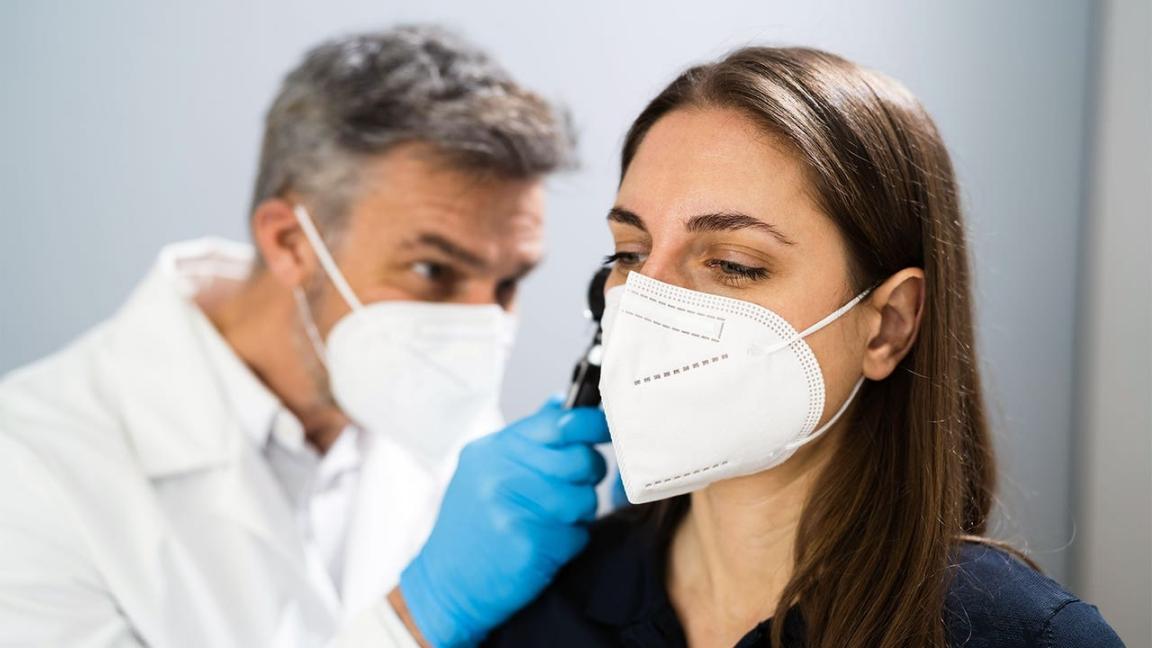Essential Healthcare Masks for Protection and Prevention
Healthcare masks have become quintessential in the battle against infectious diseases, serving as a primary barrier to prevent the spread of pathogens. Historically, their use in healthcare settings dates back centuries, evolving significantly in design and functionality to meet the growing challenges of public health safety. Andanda, with its core principle of “innovation,” leverages digital technology and safety protection expertise to revolutionize personal protective equipment (PPE). By establishing a comprehensive PPE ecological chain and integrating global industrial resources, Andanda offers a one-stop procurement solution for high-quality, diversified PPE. Emphasizing customer safety, Andanda commits to delivering exceptional personal protection products through rigorous quality control, and innovative design, ensuring user safety in all healthcare and industry environments.

Healthcare Mask Varieties
In the fight against medical infections, healthcare masks play a pivotal role, both within medical facilities and in public spaces. These masks are available in several types, tailored to provide varying levels of protection for different circumstances.
Surgical Masks
Overview and Purpose: Surgical masks are designed for single use and aim to block large particles, droplets, and sprays from reaching the wearer’s mouth and nose. They are primarily utilized in medical environments for their ability to act as a barrier against potential external contaminants.
Protection Levels: Although effective against large particulates, the loose-fitting nature of surgical masks limits their ability to filter out finer particles, making them less effective against smaller pathogens.
Respiratory Protective Masks
Function and Distinction: Unlike the surgical masks, respiratory protective masks fit snugly around the nose and mouth, offering a high filtration efficiency of at least 95% against airborne particles, including bacteria and viruses. These masks are designed to protect the wearer from inhaling harmful particles.
Classification and Standards: Widely recognized types are the N95 (U.S.), KN95 (China), and FFP2 (Europe), each adhering to their respective manufacturing and performance standards to ensure a specific level of particle filtration efficiency.
Cloth Masks
Usage and Efficacy: Primarily adopted by the general public, cloth masks are not recommended for clinical settings due to their varied effectiveness. They act as a basic line of defense, helping to minimize the spread of large respiratory droplets.
Comparison to Other Masks: Offering a lower level of protection compared to surgical masks and respirators, cloth masks are suggested for community use, particularly in situations where maintaining physical distancing is challenging.
Guidelines for Mask Use
Ensuring masks are utilized correctly is crucial for maximizing their effectiveness in preventing the spread of disease.
Correct Usage, Removal, and Disposal
- Application: Achieve a secure fit over the nose and mouth, fastening the mask firmly with ties or ear loops.
- Removal: Carefully remove the mask by its ties or loops without touching the front, and cleanse hands immediately.
- Disposal: Dispose of single-use masks in a sealed bin. Cloth masks should be laundered after each wear according to manufacturer guidelines or with regular soap.
Recommendations for Different Environments
- Surgical Masks: Suited for medical personnel and in scenarios prone to fluid splashes.
- Respirators: Critical for healthcare professionals in high-risk airborne environments.
- Cloth Masks: Recommended for the general populace in crowded areas where social distancing is not feasible.
Mask Reuse and Cleaning
Due to occasional shortages, specific guidelines have been developed for the cautious reuse of surgical masks and respirators. Cloth masks should be washed after each use to maintain hygiene and effectiveness.

The Impact of Masks on Preventing Disease Spread
Masks have emerged as a cornerstone in the fight against infectious diseases, particularly amid global health crises. Their role in public health strategies is underscored by substantial research, which informs the guidance on mask usage across healthcare and community settings.
Research Insights into Mask Efficacy
A wealth of research has highlighted the crucial role of masks in curbing the spread of infectious agents. Studies have consistently shown that N95 respirators provide the most effective barrier against airborne pathogens, surpassing surgical masks, with cloth masks ranking third in effectiveness. Noteworthy findings, such as the systematic review in The Lancet. Respirators such as N95s have been shown to significantly reduce the risk of infection for healthcare professionals compared to surgical masks. Although cloth masks exhibit varying filtration efficiencies. But their widespread use in public spaces has dramatically reduced transmission rates, underscoring the value of any mask over none.
Determinants of Mask Protection
The efficacy of masks is influenced by multiple factors, including:
- Fit: Essential for minimizing gaps around the mask, enhancing particle filtration.
- Material: The filtration capability depends on the mask’s fabric, with denser weaves offering better protection.
- Usage Habits: Proper wearing practices—covering both the nose and mouth, minimal handling, and correct disposal—are vital for optimal protection.
Overcoming Challenges and Recognizing Limitations
Despite their proven benefits, several obstacles hinder the full potential of masks in disease mitigation.
Supply and Access Challenges
The COVID-19 pandemic exposed the fragility of the global PPE supply chain, leading to mask shortages that affected both healthcare professionals and the public. Efforts to increase production have improved the situation, yet quality mask access remains an issue, especially in resource-limited settings.
Battling Misinformation
Widespread myths about mask safety and effectiveness have fueled resistance and skepticism towards mask mandates. Debunking such myths, including unfounded fears about virus filtration and CO2 accumulation, is critical to encourage compliance and educate the public on the benefits of mask-wearing.
Recognizing Masks’ Limitations
While masks are invaluable in disease prevention, they are not foolproof. Their effectiveness is significantly bolstered when combined with other measures like hand washing and social distancing. The protective quality of masks also varies by type, fit, and usage, highlighting the importance of a comprehensive approach to health safety.
Synthesis
Masks are an essential tool in the arsenal against infectious diseases, backed by robust evidence supporting their use. However, the journey towards maximizing their benefit is fraught with challenges, including supply chain vulnerabilities, misinformation, and intrinsic limitations. Addressing these issues while advocating for a holistic approach to health precautions can amplify the protective impact of masks, steering public health towards greater resilience against infectious threats.
Future Directions in Mask Utilization
Innovations in Design and Materials
The quest for enhanced protection and comfort is driving innovation in mask design. Future developments are likely to focus on breathable, high-filtration materials, alongside ergonomic features that ensure a better fit and greater user comfort for prolonged wear.
Research for Enhanced Understanding
There’s a critical need for ongoing research to evaluate mask effectiveness across different environments and settings. This includes understanding the impact of various materials, designs, and usage patterns on protection levels against diverse pathogens.
Policy Development and Public Health Recommendations
Emerging insights must inform policy decisions, guiding the development of clear, evidence-based recommendations for mask use in healthcare and community settings. This involves adapting guidelines based on the latest research and ensuring public health strategies are aligned with evolving scientific understanding.
In Sum
Medical masks are an important defense against infectious diseases. Providing vital protection to healthcare settings and wider society. Face obstacles such as supply constraints, misinformation, and the inherent limitations of masks. The path forward includes embracing advances in mask technology and materials. This is coupled with targeted research and policy based on scientific evidence. It is expected to increase our defenses against existing and emerging health challenges. Emphasis on safety, comfort and effectiveness. We can ensure that medical masks remain a critical component in maintaining public health. Giving us the resilience we need to respond more effectively to pandemics.

